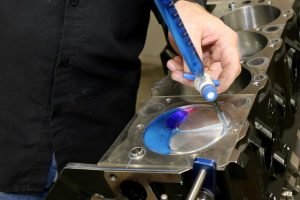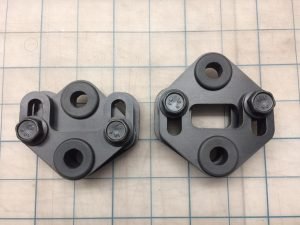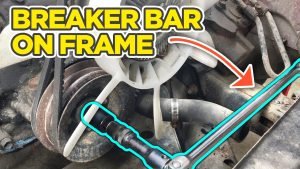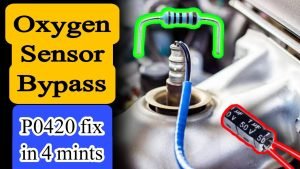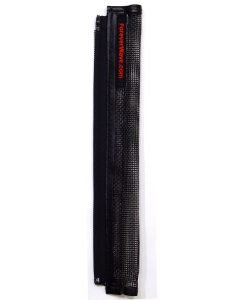
Contents
How to Reset Your Check Engine Light After a Repair: A Step-by-Step Guide
That dreaded Check Engine light illuminating on your dashboard can be stressful. However, once you’ve addressed the underlying mechanical issue, you’ll want to eliminate that annoying glow. This guide explains how to safely and effectively reset your Check Engine light after a repair has been completed. Remember, simply resetting the light doesn’t fix the problem; it only clears the code indicating the problem has been resolved.
🛒 Recommended Product
Understanding the Check Engine Light
The Check Engine light is a crucial diagnostic tool. When it illuminates, it means your vehicle’s onboard diagnostic system (OBD-II) has detected a problem that needs attention. Ignoring it could lead to further damage and costly repairs. The light itself doesn’t pinpoint the exact problem; it indicates that a diagnostic trouble code (DTC) has been stored. A mechanic uses a scan tool to read these codes and identify the specific issue.
When to Reset Your Check Engine Light
Only reset the Check Engine light AFTER you’ve addressed the root cause of the problem. If you simply reset the light without fixing the issue, it will likely reappear. Ensure the repair has been completed correctly, and the problem is fully resolved. Driving with a faulty system could exacerbate the problem and potentially cause more damage.
Methods for Resetting the Check Engine Light
There are two primary ways to reset your Check Engine light:
Method 1: The Drive Cycle Method
This method involves driving your vehicle under specific conditions to allow the OBD-II system to monitor the repaired system’s performance. This is the most common and often the most effective method, especially for minor issues.
🛒 Recommended Product
Steps:
- Ensure the repair is complete: Double-check that the mechanic has completed all necessary repairs and that the problem causing the light to illuminate has been solved.
- Drive normally: Drive your car for approximately 100-200 miles, varying your driving conditions. This includes driving at different speeds, accelerating and decelerating, and idling.
- Monitor the light: Pay close attention to the Check Engine light. If the underlying problem has been fixed, the light should turn off automatically after several drive cycles. This may take a few days or even a week depending on the issue and your driving habits.
- If the light remains on: If the light stays on after several drive cycles, there could be a persistent problem that needs further investigation. Consult a mechanic to diagnose the issue further.
Method 2: Using an OBD-II Scanner
An OBD-II scanner (often available at auto parts stores) can be used to directly erase the diagnostic trouble codes (DTCs). This is a faster method, but it’s crucial to have resolved the problem first.
Steps:
- Locate the OBD-II port: This is usually found under the dashboard near the steering column.
- Connect the scanner: Plug the OBD-II scanner into the port.
- Turn on the ignition: Turn your car’s ignition on (but don’t start the engine).
- Follow scanner instructions: The specific steps will vary depending on the scanner model. Generally, you’ll need to navigate the menu to find the option to clear codes or reset the ECU (Engine Control Unit).
- Check the light: After clearing the codes, turn off the ignition, wait a few minutes, and then start your car. The Check Engine light may remain on for a short time, but it should turn off after a short drive if the underlying problem is truly solved.
Common Mistakes to Avoid
- Resetting the light before the repair: This is the most critical mistake. Addressing the mechanical issue is paramount. Resetting the light without fixing the problem is akin to ignoring a warning sign.
- Using the wrong method: Choose the appropriate method based on your knowledge and the complexity of the repair. If uncertain, consult a mechanic.
- Ignoring a recurring light: If the Check Engine light reappears after resetting, it indicates a persistent issue that requires professional attention. Don’t delay getting it checked by a qualified mechanic.
Conclusion
Resetting your Check Engine light is a simple process, but it’s crucial to only do so after addressing the underlying mechanical issue. Following these steps and avoiding the common mistakes ensures a safe and effective resolution. If you’re unsure about any step, consulting a qualified mechanic is always the best course of action. Remember, a properly functioning vehicle is a safe vehicle.
🛒 Recommended Product
FAQ
Q. How do I reset my check engine light after a repair?
A. There are several ways to reset your check engine light. The most common method is to disconnect the negative terminal of your car battery for about 30 minutes. This will allow the car’s computer to fully reset. However, some newer vehicles require a more sophisticated reset using an OBD-II scanner. A mechanic can also reset the light during the repair process. After disconnecting the battery, reconnect it and start your vehicle. The light should turn off after a short drive, if the repair was successful. If the light remains on, there may still be an issue.
Q. Will disconnecting the battery always reset the check engine light?
A. While disconnecting the battery is often effective for older vehicles, it’s not guaranteed to work on all cars, particularly newer models with more sophisticated computer systems. Some systems require a specific reset procedure using an OBD-II scanner to clear the diagnostic trouble codes (DTCs).
Q. What if the check engine light comes back on after I reset it?
A. If the check engine light returns after a reset, it means the underlying problem hasn’t been completely fixed. You should have your vehicle inspected by a qualified mechanic to diagnose and repair the issue. Ignoring the light can lead to further damage and potentially unsafe driving conditions.
Q. Do I need a special tool to reset the check engine light?
A. For many vehicles, disconnecting the battery is sufficient. However, for more modern vehicles, a scan tool compatible with the OBD-II system is usually required to clear the diagnostic trouble codes. These tools can be purchased relatively inexpensively online or at auto parts stores.
Q. Can I reset the check engine light myself, or should I take it to a mechanic?
A. Resetting the check engine light yourself is possible, depending on the vehicle and the complexity of the repair. If the repair was simple and you’re comfortable working on your car, you may be able to reset it by disconnecting the battery or using an OBD-II scanner. However, if you’re unsure or the repair was complex, it’s best to take your vehicle to a mechanic to ensure the problem is fully resolved and the light is reset correctly. Ignoring the check engine light can be detrimental to your vehicle’s longevity and safety.
Q. How long should I drive after resetting the check engine light before I know it’s fixed?
A. The check engine light often needs a drive cycle of several miles, allowing the car’s computer to monitor the system and confirm that the issue is resolved. If the light doesn’t come back on after a drive cycle of around 100 miles or more, this is a good indication that the problem has been resolved. However, if the light reappears, the problem needs further attention.
Q. My check engine light is flashing. Should I reset it?
A. No, a flashing check engine light indicates a serious problem that requires immediate attention. Do not attempt to reset the light. This often signifies a potentially damaging issue like misfiring cylinders which could cause severe engine damage. Take your vehicle to a mechanic immediately for diagnosis and repair.
Related Articles
How to Fix a Dent in Your Car Without Professional Help
How to Fix a Dent in Your Car Without Professional Help: A DIY Guide Got a frustrating dent in your car? Before you shell out big bucks for profession…
How to Change a Flat Tire Quickly
How to Change a Flat Tire Quickly and Safely: A Step-by-Step Guide Finding yourself with a flat tire is never fun, but knowing how to change it quickl…
How to Remove Pet Hair from Car Seats
How to Remove Pet Hair from Car Seats: A Comprehensive Guide Do you love your furry friend but dread the inevitable aftermath of their car rides? Pet …
Affiliate Disclosure: As an Amazon Associate, I earn from qualifying purchases made through links on this site.

